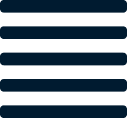After conducting almost 200 customer interviews, we’ve gained some insight into what separates the great from the good when it comes to inventory.
We started by asking our advisor, Oseyi Ikuenobe, the Senior Product Manager of @WalmartLabs’ Smart Forecasting product for his thoughts. At @WalmartLabs, Oseyi and a team of data scientists and engineers plans the inventory for Walmart’s $13 bn e-commerce business.
Inventory management should have ROI benchmarks
According to Oseyi, "The best inventory strategy is one that allows you to buy the 'right amounts of the right inventory' to maximize revenue, profitability and growth. Instead of trying to simply control costs, it is better to think of inventory decisions the way we think of marketing spend - in terms of ROI. Once you have that mindset, you quickly realize that the ultimate smart inventory solution is one that can synthesize the collective wisdom of the organization and deploy it to drive decision making."
We’ve gleaned two insights from Oseyi’s thoughts:
- Best-in-class retailers think about inventory as an investment, not a cost center
- Collaboration between key functional areas is key to successful inventory planning
Reframing inventory as an investment
We work mostly with start-ups and all too often we see them allocating a fixed budget to inventory. But, inventory is an investment, much like marketing. The investment that a company makes in its inventory supports the company’s sales target. We’d propose that companies go through a series of questions to set their inventory budget:
- What is our marketing budget?
- Based on our marketing spend and our organic reach, what is our revenue target?
- How much product do we need to sell to support our revenue target?
This third question is the start of the planning process. Once the revenue target is established, a planner can go through and make a determination regarding the product mix and volume of product needed.
Collaboration improves inventory planning
The process described above only works if there is tight collaboration between all of the functional areas that impact sales like finance, marketing, merchandising and operations.
Unfortunately, we have seen a lot of avoidable crises caused because one functional area forgot to tell operations about planned changes. Things like changing the discount amount on a promo or A/B tests planned on the site. While these lapses might seem small, they can have a big impact if there isn’t enough product in stock to support these initiatives.
So What?
We want to encourage our customers to reframe the way you think about inventory: it’s not your biggest cost center, it’s your biggest investment. At Fuse, we’re designing a tool to help automate the grunt work of planning so that you can focus on important, strategic decisions.
We’re here to help you focus on your business, not your inventory.
.png)

.png)









.png)



%20hover.png)
.png)
hover.png)







Let us know what you think about this post
Put your comment below.